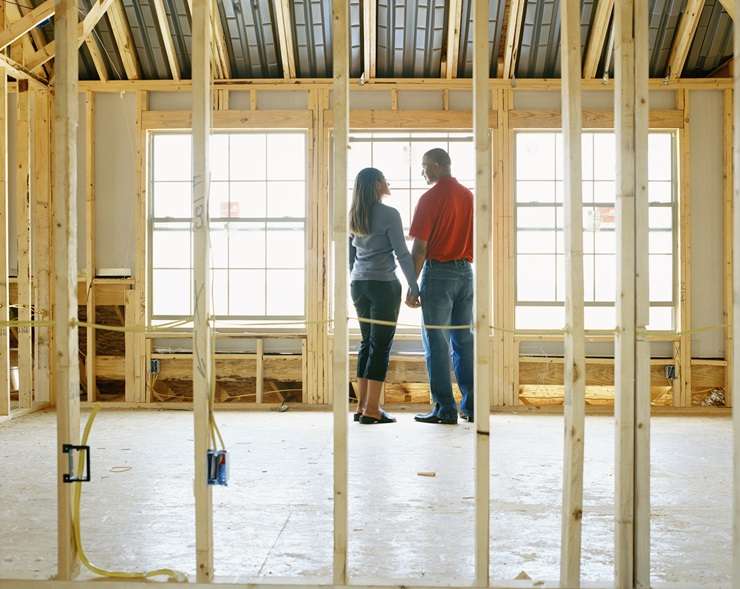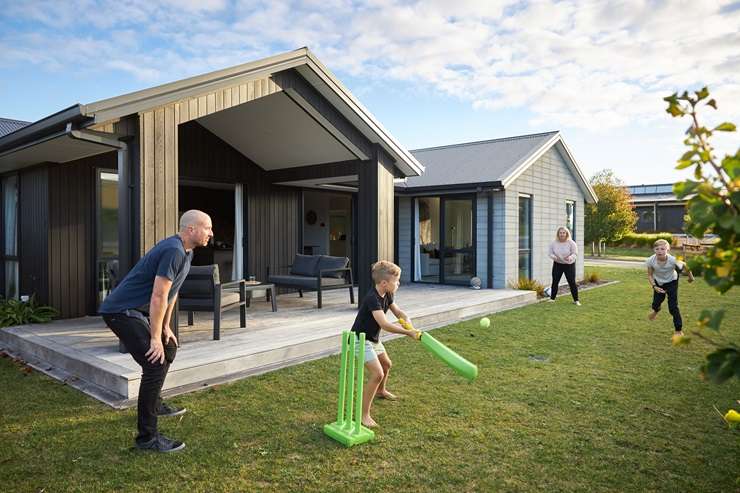Choosing builders and architects is a huge decision and crucial to a successful build. Choosing well will help the entire process run smoothly and to budget.
New homes are sold in a variety of ways and if it’s a house and land package the buyer wants, either off-the-plan or spec build will be the option. Home buyers will typically shop around and choose a group build company such as Classic Builders. As with a normal real estate transaction, these options only require a sale and purchase agreement.
The question of builders and building contracts is more relevant for custom designed and built homes, where the homeowner buys the land and commissions an architect or designer and builder. Sometimes the architect will source a builder. Or conversely, a builder or group building company will have an inhouse design team or may employ or have relationships with architects.
Ways to source builders and architects include:
Start your property search
- Word of mouth.
- Trade organisations such as the Te Kāhui Whaihanga New Zealand Institute of Architects, Building Industry Federation, Registered Master Builders Federation, the New Zealand Certified Builders Association.
- By visiting show homes. Group builders in particular often have show homes that display their work.
- Google reviews and websites
How to check a builder’s track record
Builders credentials can be checked in a number of ways. Builders need to be licensed building practitioners to carry out restricted building work, which includes house building. That can be checked on the Licensed Building Practitioners (LBP) register. The register holds details of their qualifications, license class details and details about any complaints. Also check that the builder has relevant public liability and other insurances.
“Do your homework,” says Classic Builders building consultant Mark Hooper. “Visit show homes, talk to your friends, and jump online to check out reviews.”
Asking potential builders to put you in contact with previous clients can be helpful, says Hooper. “I’ve got a list of previous clients new clients can contact and talk to about the process and Classic Builders. I get a fair bit of traction out of that.”
Many builders are members of a professional organisation such as Master Builders, the NZCB or Building Industry Federation.
Homeowners can also seek recommendations from other building practitioners they know such as architects, designers, surveyors, planning consultants or engineers.

It's important to be clear about price at the start of your negotiations. Photo / Getty Images
Once they have a shortlist of builders, buyers need to ask themselves if they can have a good relationship with the company. “People out there are looking for honesty, relatability, [and] integrity,” says Hooper. “Somebody to be able to challenge you as the client to ask those second and third questions about why do you want it, do you have the budget, should you park it for a while?
“What I try and get across to clients when they first walk in the door [is] what they’re looking for is somebody they can have a relationship with. You’re effectively becoming the third wheel of their relationship for the best part of a year. You need to be able to talk about the things that are important, be honest and upfront.”
Hooper also recommended speaking to mortgage advisers. “They have a pretty good handle on who’s doing the business and whether it’s good or bad.”
Getting quotes
The Ministry of Business, Innovation and Employment (MBIE) recommends getting three quotes or estimates for building work. A quote is a promise to build the home for a set price according to the specifications of the home. It doesn’t include any variations or changes that are agreed at a later date. An estimate is not a set price although the contractor is obliged to be reasonably accurate.
Builders need detailed plans and specifications to provide an accurate estimate or quote. The more detail the homeowner can provide at this stage, the more accurate estimates and quotes will be. It’s common with a house build to employ a quantity surveyor to itemise the cost and quantity of materials and labour.
How building contracts work
Written contracts are compulsory for residential building work costing $30,000 GST inclusive or more. A contract should outline the price and whether it’s fixed price or an estimate, roles of contractors, start and finish dates, payment schedules, detail materials, define acceptable quality of work, and cover issues such as defects and disputes. A contract should cover building consents, health and safety on site, the relationship with architects or designers, and liaising with the council for variations, the final inspection and the code compliance certificate. Builders must also provide disclosure statements and standard checklists with information about the building process.
Most contractors will have their own contract document and homeowners should get their lawyers to review the document to ensure there are no surprises.
Contracts are generally either full contracts or labour-only contracts. With a full contract the builder manages the entire build phase, supplies the materials, hires subcontracts such as plumbers and electricians, and arranges and manages council inspections. Sometimes a builder and homeowner will jointly manage the project.

A well-managed build will result in a quality home. Photo / Classic Builders
A labour-only contract is what it says. The builder in this scenario is only responsible for the actual building. The homeowner, their architect or project manager oversees the entire process hiring and managing other contractors, sourcing materials, health and safety on site and takes on responsibility for ensuring the work meets the building code.
Group build house and land contracts are popular because they’re a standard sale and purchase agreement on the finished home, says Cameron McCallum, regional manager for Eastern Bay of Plenty at Classic Builders. These are popular with first-home buyers and investors. “Whereas if you’re doing a design and build then it’s a building contract.”
Managing the process
Homeowners often use architects, project managers or builders to manage the process of a build. Depending on the contract, the homeowner or representative needs to:
- Organise subcontractors and ensure they arrive when needed.
- Order materials and ensure they’re on site in a timely manner.
- Monitor build progress to ensure it is being done to plan and meets council requirements.
- Arrange and carry out inspections.
- Liaise with the builder to answer questions and clarify when needed
- Keep on top of progress payments.
- Negotiate with the builder over variations, and amendments to the building consent.
- Get the final inspection done.
Even if the homeowner has employed building practitioners to manage the build they can’t entirely abdicate responsibility. The homeowner should do periodic inspections to make sure work is progressing, and to communicate any variations.
A great building company will help you:
- Understand the process and ensure you are informed and feel confident.
- Set realistic budget expectations and not try to win your business on price.
- Find a section that will work for your budget, timeframe and the home you want to build.
- Explore design options and help you create a bespoke floorplan suited to your budget and lifestyle.
- Source all the information you need to make an informed decision upfront from geotech reports to electrical services.
What happens if things go wrong?
Building work in New Zealand is governed by the Building Act and must meet regulations set out in the building code and other rules that govern the sector including council bylaws, and the Resource Management Act.
Disagreements can arise over a wide range of issues, although the final cost and quality of finish are common ones.
Before complaining, homeowners need to consider their rights and obligations and that of the builder under the law.
When things go wrong the first port of call is to talk through the problem with the other party and follow any disputes process agreed in the contract.
There are a range of ways of complaining. The builder’s or architect’s professional organisation such as New Zealand Certified Builders and the New Zealand Institute of Architects may have a dispute resolution service.
If the homeowner is not satisfied with that route, they can take the other party to the government’s Disputes Tribunal or to court under the consumer Guarantees Act or Fair Trading Act, depending on the nature of the dispute.
Sometimes homeowners go down the mediation, arbitration and adjudication route with private dispute resolution agencies such as the New Zealand Dispute Resolution Service or Fairway. These organisations can offer adjudication, arbitration, mediation or an expert determination.
The Ministry of Business, Innovation and Enterprise (MBIE) can also make determinations on matters of doubt or dispute to do with building work.
Other challenges
If a builder goes bust part way through the contract, a variety of things can happen. Building franchise companies may offer guarantees to ensure the build is completed if the local franchisee goes out of business. Associations such as the Registered Master Builders Association provide guarantees that cover homeowners if the building company goes into liquidation.
>> Next steps: The OneRoof home building guide part 5 - buying off the plan and other options
* This article was created in partnership with Classic Builders


































































